You are here: Start » Getting Started » Main Window Overview
Main Window Overview
Elements of the User Interface
The user interface of FabImage Studio has been carefully designed for optimal user experience. All the main elements of the application are available on a single screen, as depicted below. The standard layout of windows can be changed in an arbitrary way—use this feature to adapt the application to your preferences. In particular, it is advisable to work with two HD monitors (or one curved ultra-wide, 34'') and use the second monitor to display undocked data previews or the HMI window.
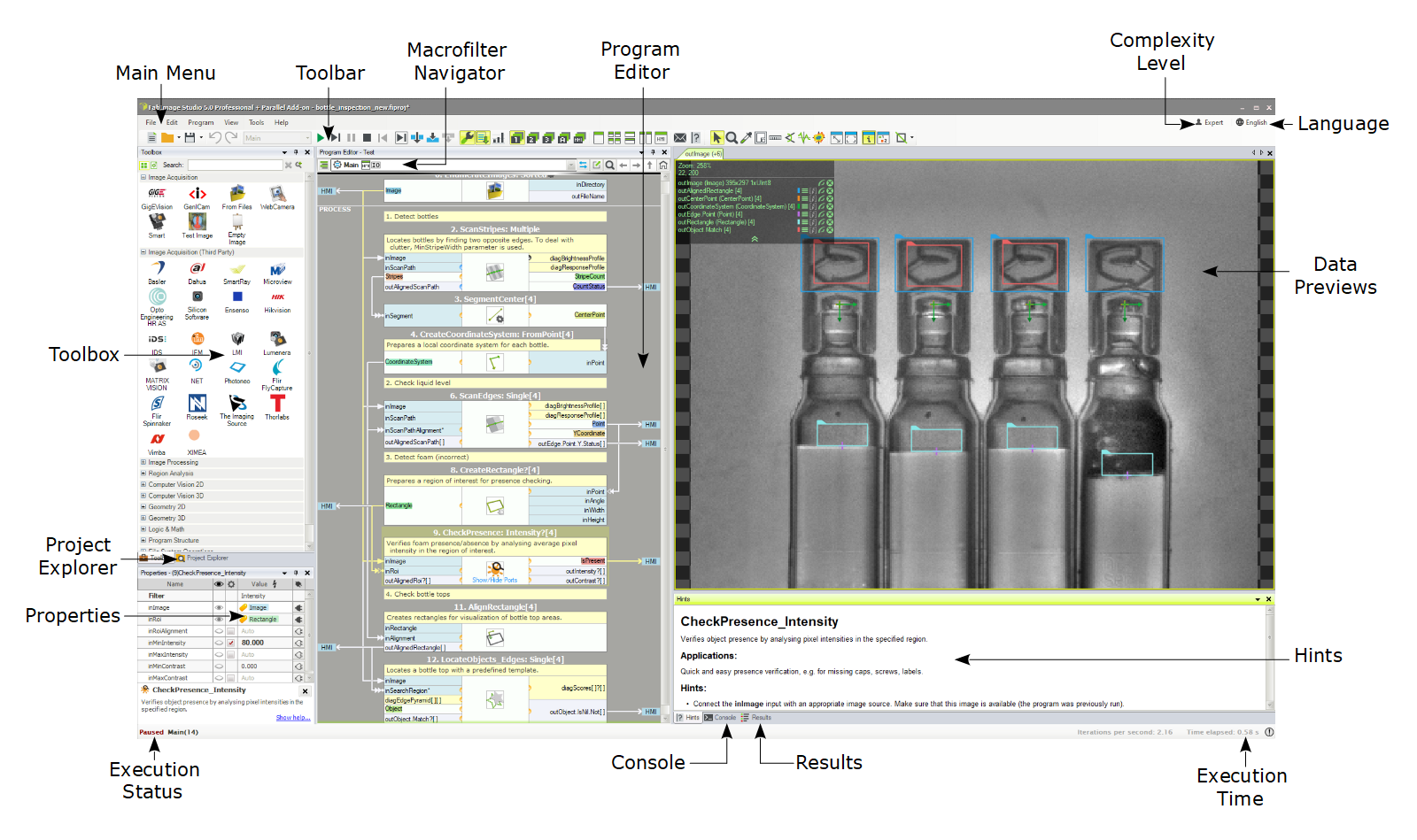
Elements of the User Interface.
The purpose of the individual controls, going clockwise starting from the top left corner, is as follows:
- Main Menu and Toolbar
This is a standard application menu that contains all major actions and options, as well as a control bar which provides convenient access to the most common actions.
See also: Main Menu and Application Toolbar
- Macrofilter Navigator
This control displays the tree of the macrofilter instances contained within the selected program. By default it is attached to the top of Program Editor, but can also be undocked and placed anywhere in the main window. - Program Editor
The Program Editor is the area within FabImage Studio in which filters (tools) are placed and connected to create programs. To insert a filter there, just drag and drop one from the Toolbox or double-click on it.
See also: Program Editor
- Complexity Level
This option controls the amount of features that are available according to the user's personal experience and needs.
See also: Complexity Levels
- Language
This option controls the language of the user interface (English, German, Japanese, Polish, Simplified Chinese and Traditional Chinese). - Data Previews
These panels display the data computed by filters. If you drag and drop inputs and outputs of various filters, this is where you will see the corresponding data. Extra options can be found in the Toolbar.
See also: Preview and Data Presenting
- Hints
This window provides hints as for the use and function of various filters as well as possible solutions to most common problems. - Execution Time
It displays the total execution time of the ongoing execution process.
See also: Optimizing Image Analysis for Speed
- Results
The Results window has two functions. First, it displays numerical and textual outputs of the selected filter as well as the relevant statistics. Second, it allows for setting limits upon output values, thus providing a quick and easy way for telling OK objects from NOK ones during inspection. - Console
The Console window informs the user about events related to project editing and execution. It is particularly important for finding errors. - Execution Status
It informs the user whether the program is running, paused or stopped. During execution it also displays the current program location (the call-stack). - Properties
The Properties window is where the parameters of filters and HMI controls are set. - Project Explorer
It displays a list of modules, macrofilters, global parameters and attachments contained within the currently edited project. Please note that you only see a list of definitions of macrofilters here, not their instances. One macrofilter (design) can have multiple instances (uses) and individual instances can be browsed in the Macrofilter Navigator control.
See also: Browsing Macrofilters
- Toolbox
It is a simplified and task-oriented catalog of filters most commonly used in typical machine vision applications.
See also: Toolbox
Program Display
In order to facilitate your exploration of FabImage Studio's Program Editor, we offer the selection of view mode within the Program Editor. To change the display mode, expand the View bar and select Minimal, Compact and Full; each of them will suit various users to different degrees.
- Minimal
Unlike the other two, this mode does not display input ports—therefore, it also does not display connections between inputs and outputs. Inside the bloc there are regular outputs, diagnostic outputs are right beneath. All of the outputs are available under the "..." button; click this button to rename them. When you want to connect any of the outputs to the inputs inside another filter, you must drag and drop them; then you will see the list of inputs whose data type is consistent with that of the input you selected.
- Compact
This mode is more complex than Minimal while also not filling the Program Editor with information that might not necessarily be of any interest to the user. When dealing with more robust filters, the Compact view hides the inputs that are not as commonly used as the others—however, each of them can still be brought back into the main filter block frame by clicking "Show/Hide Ports" and selecting the necessary port.
This mode suits well both simple and complex applications alike.
- Full
Unlike in the Compact mode, here all the inputs of the given filter are always visible within the filter block frame and may not be disabled. Most importantly, this mode provides a handy preview of the filter's properties without having to click on it; instead, the values assigned to each input—as long as they can be represented as text—can be seen to the right of each bloc filter frame, which greatly speeds up the troubleshooting process.
The downside of the Full view is the considerably increased size of the portion of the screen that must be dedicated to the Program Editor, which may sometimes limit the readability of the Project Explorer or preview windows. Nevertheless, as long as you can afford some extra space on the screen, this view will enable you to learn about filters' properties without the necessity to access them directly, something to keep in mind especially while working on rather complex applications.
This mode is particularly suitable for less complex applications.
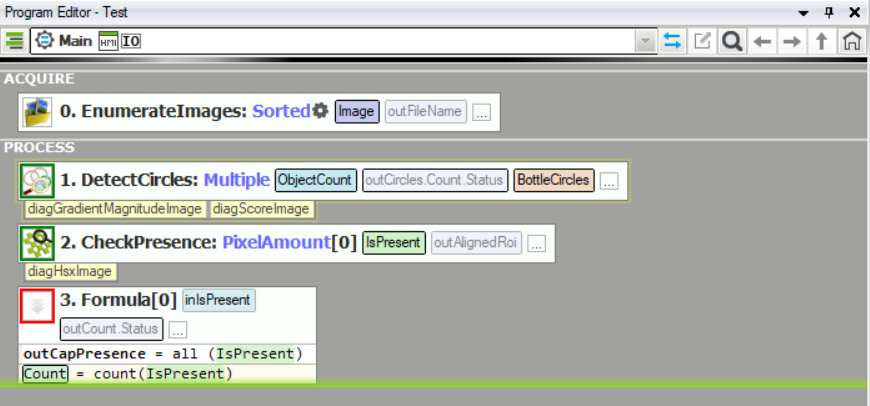
The Minimal view in the Bottle Crate example.
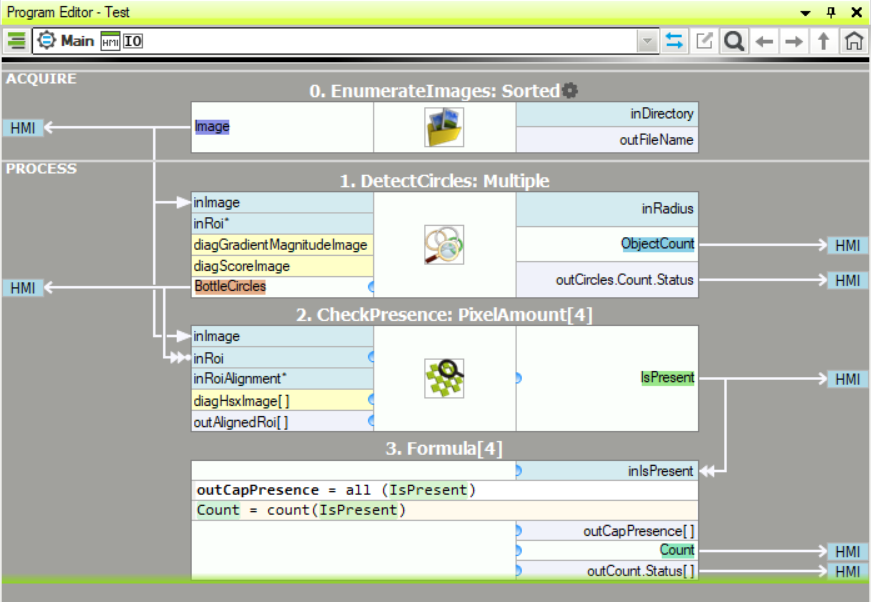
The Compact view in the Bottle Crate example.
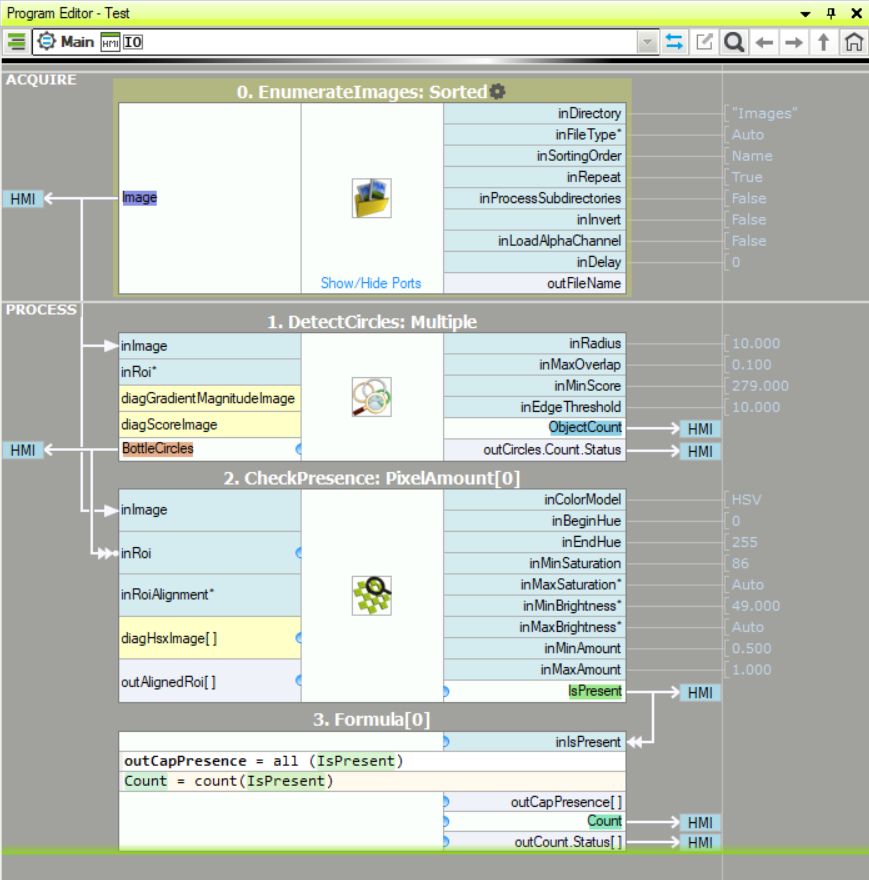
The Full view in the Bottle Crate example.
The Basic Workflow
Creating vision algorithms in FabImage Studio comes down to three intuitive steps:
- Drag & drop (or double-click) filters from the Toolbox to the Program Editor.
- Drag & drop connections between filters or set constant input values in the Properties window.
- Drag & drop filter outputs to the Data Previews panels.
Whenever a part of a program is ready, click Run or Iterate buttons in order to test it. The Console window at the bottom will also display some important information concerning the execution. Keep an eye on it—especially when something goes wrong.
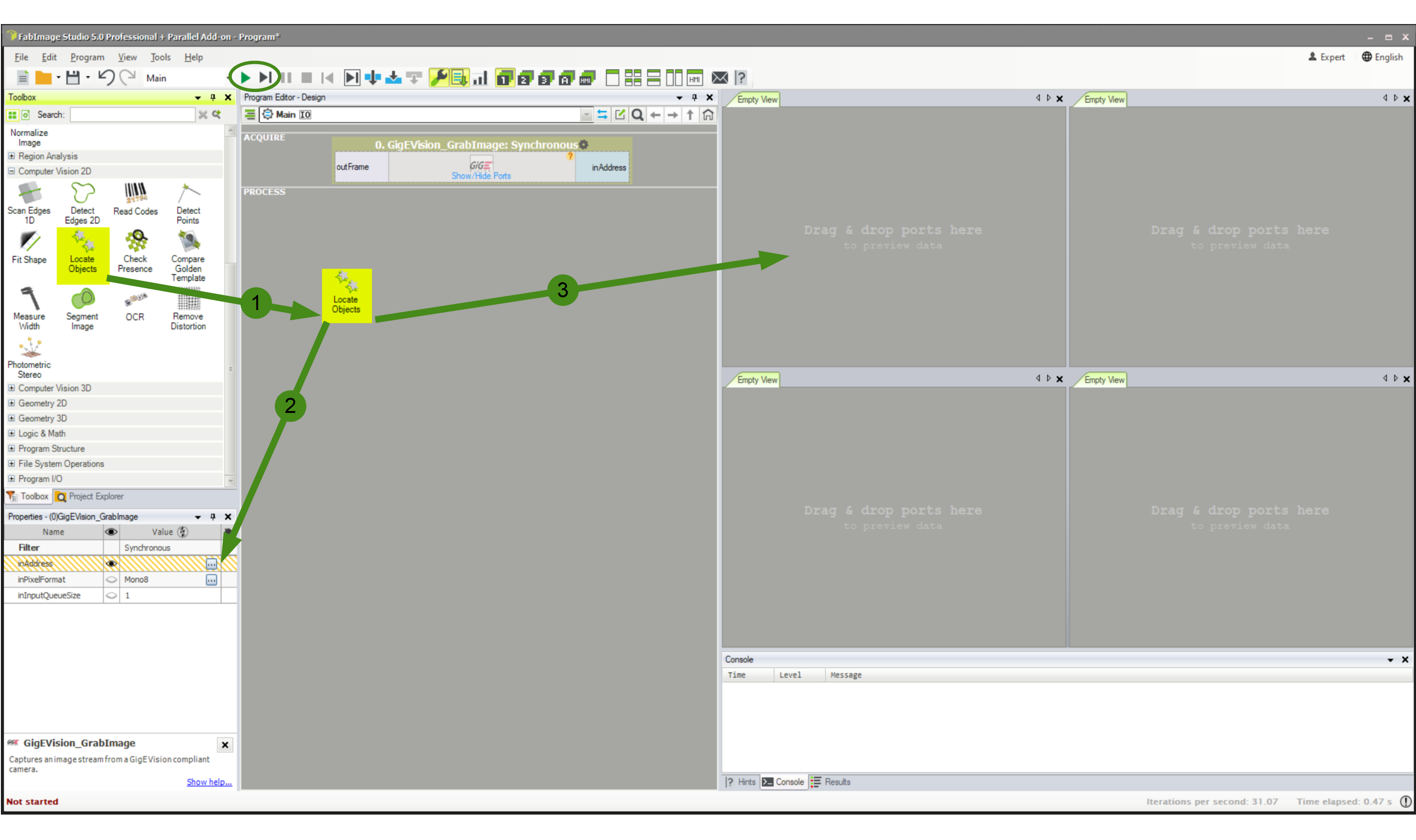
The workflow of FabImage Studio.
| Previous: Installation | Next: Main Menu and Application Toolbar |

